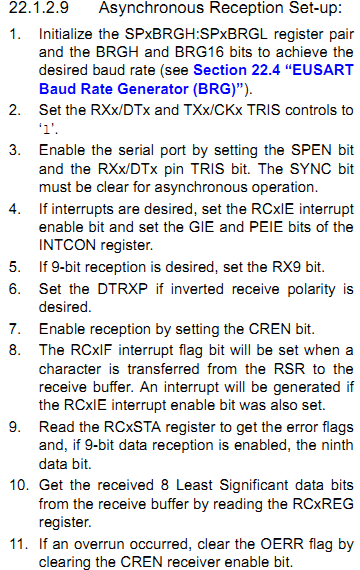ragav4456
Full Member level 4

- Joined
- Aug 1, 2012
- Messages
- 228
- Helped
- 19
- Reputation
- 38
- Reaction score
- 17
- Trophy points
- 1,308
- Activity points
- 2,568
Hello sir
I Have doubt in PIC16f1527 IC UART1.
How to select UART1 and how to configure uart1 bits?
I Have doubt in PIC16f1527 IC UART1.
How to select UART1 and how to configure uart1 bits?




